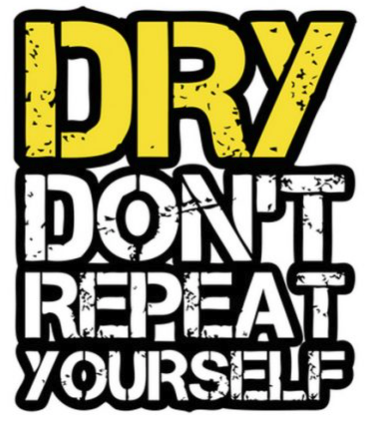DRY principle

The DRY Principle, which stands for Don't Repeat Yourself is a software development principle that emphasizes the importance of reducing repetition of code and data. The main idea is to avoid duplicating code across a system to improve its maintainability, readability, and reusability. By ensuring that every piece of knowledge or logic is represented only once, the DRY principle aims to minimize redundancy and reduce the risk of inconsistencies.
Key Concepts of the DRY Principle
Single Source of Truth (SSOT): The DRY principle encourages having a single, authoritative source for each piece of knowledge or functionality in your codebase. This means any logic, configuration, or behavior should be defined in one place only.Maintainability: When a change is needed, it should only have to be made in one place. By following the DRY principle, you minimize the effort required to maintain and update code. This also reduces the chances of introducing errors when changes are made.Readability: Code that adheres to the DRY principle is often easier to understand because it is more concise and structured. Developers can easily understand what a particular piece of code is doing and how different parts of the system relate to each other.Reusability: By writing reusable functions, methods, or modules, you can apply the same code in different parts of the application. This not only saves time but also ensures consistency in behavior across the application.
Common Misconceptions about DRY
DRY Doesn't Mean No Code Duplication at All: In some cases, following DRY too strictly can lead to overly abstracted code that is hard to understand and maintain. DRY should be balanced with clarity and simplicity. For example, small utility functions might be duplicated if it keeps the code more readable and contextually relevant.DRY is Not Just About Code: DRY applies to all aspects of software development, including database schema, configuration files, documentation, and even team processes. The principle is about avoiding redundancy wherever possible.DRY Shouldn't Lead to Over-Engineering: In the pursuit of DRY, developers might create complex abstractions or generic solutions that are hard to understand. It's important to ensure that the application of DRY aligns with the principle of simplicity.